Chile Japones: Spicy History + Salsa Recipe
Chile Japones, or Japanese pepper, has a fascinating history in Mexico. Today it is a staple in Mexican and Asian cuisines, commonly used in salsas, sauces, condiments, and stir fries. This chile japones salsa is a family favorite because it’s spicy, easy to make, and delicious on my grandma’s ground beef tacos.

A BRIEF HISTORY OF CHILE PEPPERS
- Chile peppers are believed to have originated in the Americas, specifically Central and South America. Archaeological evidence suggests that chiles were domesticated by indigenous peoples in present-day Mexico and parts of Central America over 6,000 years ago.
- Aztecs and Mayans used chilies for their flavor and spice in cooking, as well as for medicinal and ceremonial purposes.
- With Scoville heat units ranging from 15,000 to 30,000, it has a similar heat profile as cayenne peppers.
CHILES AND THE COLUMBIAN EXCHANGE
- Chiles eventually made their way to other parts of the world including Europe, Asia, and Africa, through the Columbian Exchange after Christopher Columbus’s voyages to the Americas in the late 15th century.
- Today, chilies are cultivated and consumed worldwide, and are used in Mexican, Indian, Middle Eastern, and Thai cuisines and are also used in Caribbean dishes and Hunan dishes.
WHY IS IT CALLED CHILE JAPONES?
The name “Chile Japones” (Japanese chili) can be somewhat misleading when considering that all chile peppers are originally from the Americas and not Asia.
Introduction to Japan: It is believed that chile peppers were introduced to Japan by Portuguese traders and missionaries in the 16th century during the age of exploration and global trade. Over time, they became popular in Japan.
Naming: These chile peppers were initially known as “Capsicum,” derived from the scientific name of the chili plant. The name “Chile Japones” likely emerged because, in Japan, they became associated with their use in Japanese cuisine. The term “Japonés” signifies their connection to Japan.
So, while chile peppers did indeed originate in the Americas, their name is a reflection of their historical journey and popularity in Japanese cuisine, where they are used in various dishes. Now they are as much a popular ingredient in Latin American cuisine as they are an Asian spice staple.
INGREDIENTS
- Japones chiles are small, red, and slender, typically measuring about 2 to 3 inches (5 to 7.5 cm) in length. Fun Fact: Antioxidants like vitamin C and capsaicin in Japanese peppers help boost the immune system and combat free radicals in the body, reducing oxidative stress and lowering the risk of chronic diseases – a great reason to add them to your daily diet.
- Garlic cloves add flavor and complexity
- Salt: My salt of choice when cooking is always Diamond Crystal Kosher Salt so be sure to taste and adjust as you cook if using a different salt.
- Tomato sauce provides a smooth and slightly thicker consistency.

TOOLS SUPPLIES AND EQUIPMENT
- Comal or skillet
- Blender
- Bowl or jar with a lid
- Salsa spoons
HOW TO MAKE THIS RECIPE
This Mexican red salsa has a long history in my family and originated with my Grandma Lola. Its tasteful combination goes well with just about anything – tacos, huevos, burritos, hot soups, and sandwiches, are just a few things I love to pair with this salsa. Don’t be fooled by Japanese pepper’s slim form because it packs a punch with similar heat levels as chile de arbol, and a lot of flavor complexity.
Step 1
Lightly toast chiles on a comal or large flat pan over low-medium heat.
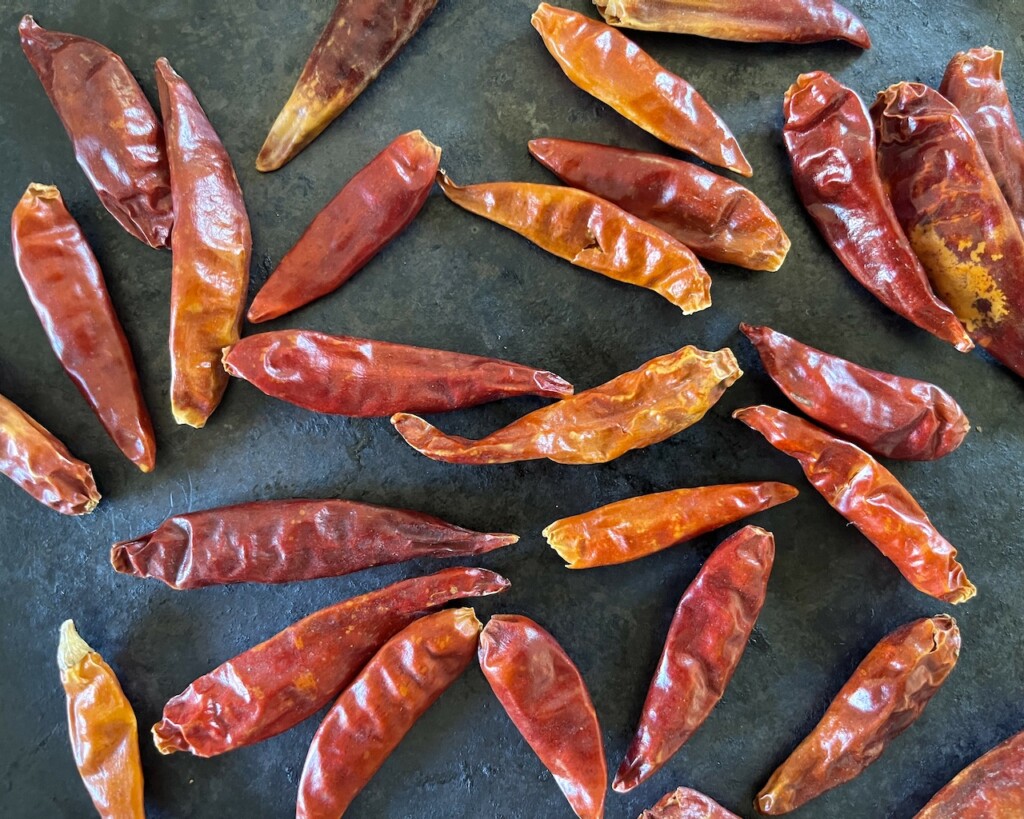
Step 2
Blend chiles with water and garlic.
Step 3
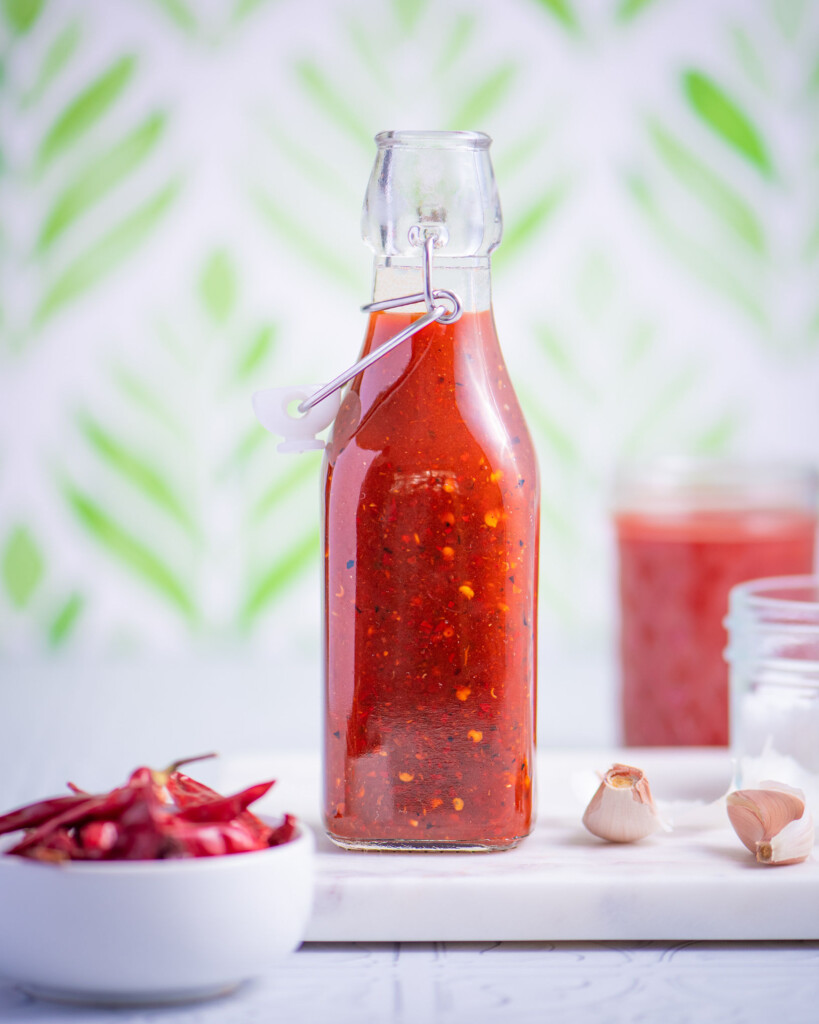
Transfer to a jar and shake to mix with tomato sauce and salt.
LOOKING FOR MORE INSPIRATION?
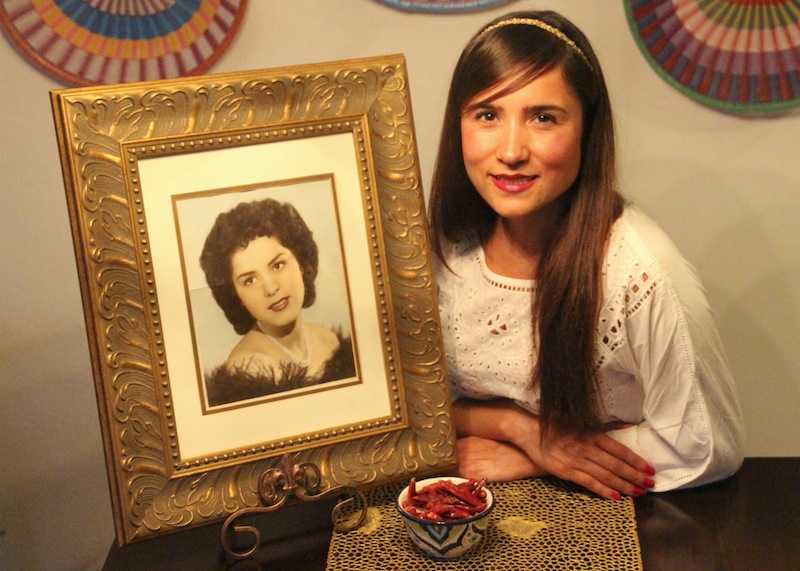
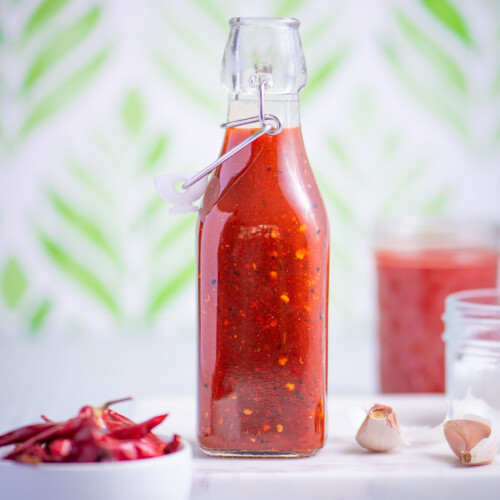
Chile Japones Salsa
Equipment
- Comal, skillet, or flat pan
- Bowl or jar with a lid
Ingredients
- 40 dry japones chiles
- 1 ½ cup water
- 2 garlic cloves large, peeled
- 2 teaspoons salt or to taste
- 4 ounces tomato sauce up to 8 ounces total, if desired
Instructions
- Lightly toast chiles on a comal or large flat pan over low-medium heat. Using tongs, move and turn frequently to avoid burning. Once chiles begin to release their aroma and become slightly darker in color, remove from heat.
- Blend toasted chiles and raw garlic with 1 cup of water on medium setting until somewhat smooth in texture. You want to still be able to see the seeds, but avoid having chunks of chile or garlic in the salsa. It should not look like a puree.
- Transfer the chile mixture to a medium jar. Very lightly rinse blender with remaining ½ cup water to obtain the residual chile from the blender and add chile-water mixture to the jar as well.
- Add tomato sauce and salt. Cover and shake the jar vigorously until well mixed.
- Taste and adjust salt. If necessary, add small amounts of water and additional tomato sauce until salsa reaches desired consistency. This salsa should be light in texture, but not watery.
A Note from Lola
- Use dry peppers for liquid infusions (add them to vodkas for a spicy Bloody Mary and other cocktails)
- Add them to honey for a sweet and spicy infusion
- Use chile flakes to make dry rubs, hot peanut sauces, and hot pepper oils
- Use as a cayenne pepper substitute or in place of chile de arbol
Nutrition
Recipe originally published on February 26, 2014 / Photography (salsa and ingredients only): Cacey McReavy
Lola’s Cocina is a small business that earns various revenue streams. This includes sponsored posts and affiliate commissions from linked products, which I use and love. This commission is an agreement between Lola’s Cocina and retailers, with no extra cost to readers. This income helps sustains the site.

Lola Wiarco Dweck
Lola is a Mexican-American recipe developer, writer, and cooking instructor who loves sharing her culture with the world. Growing up in California and spending summers in Mexico, Lola celebrates her family’s Mexican recipes and vibrant culture through Lola’s Cocina.


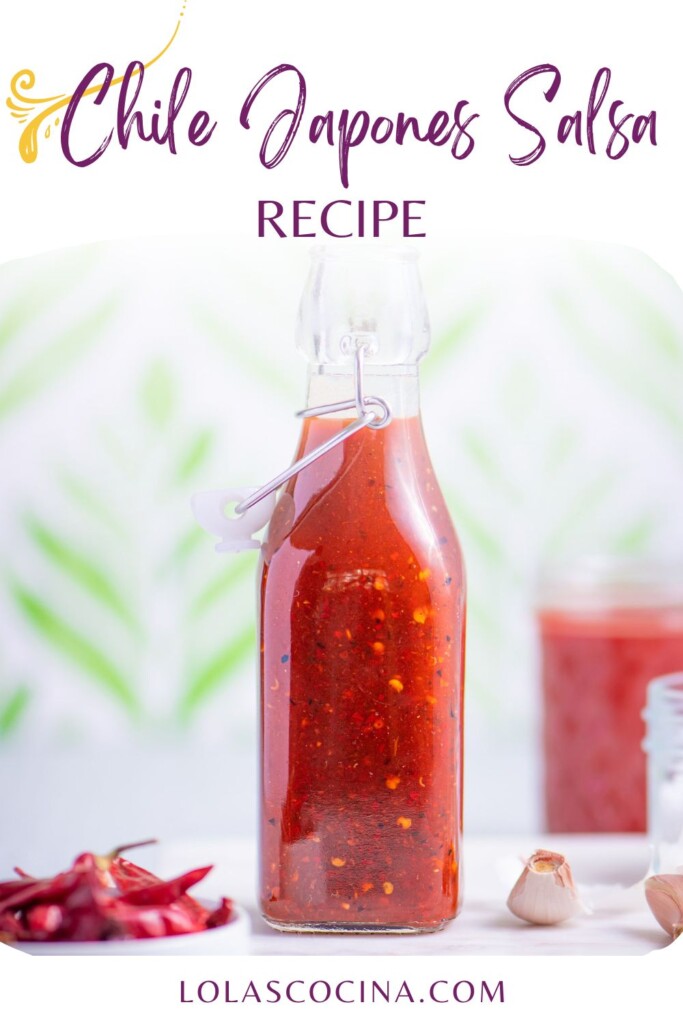
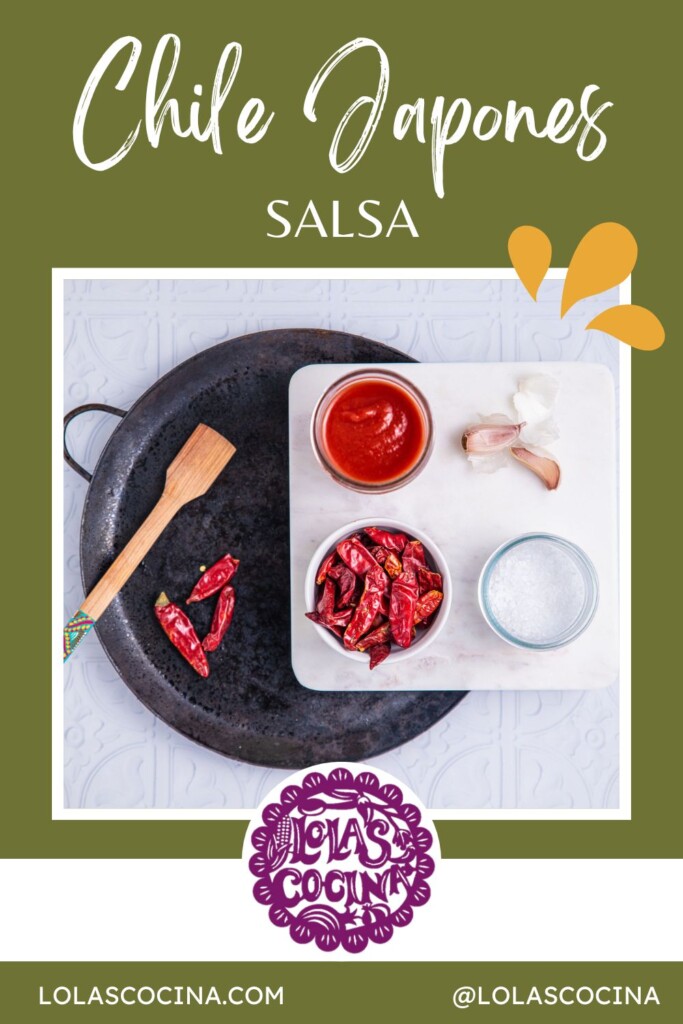
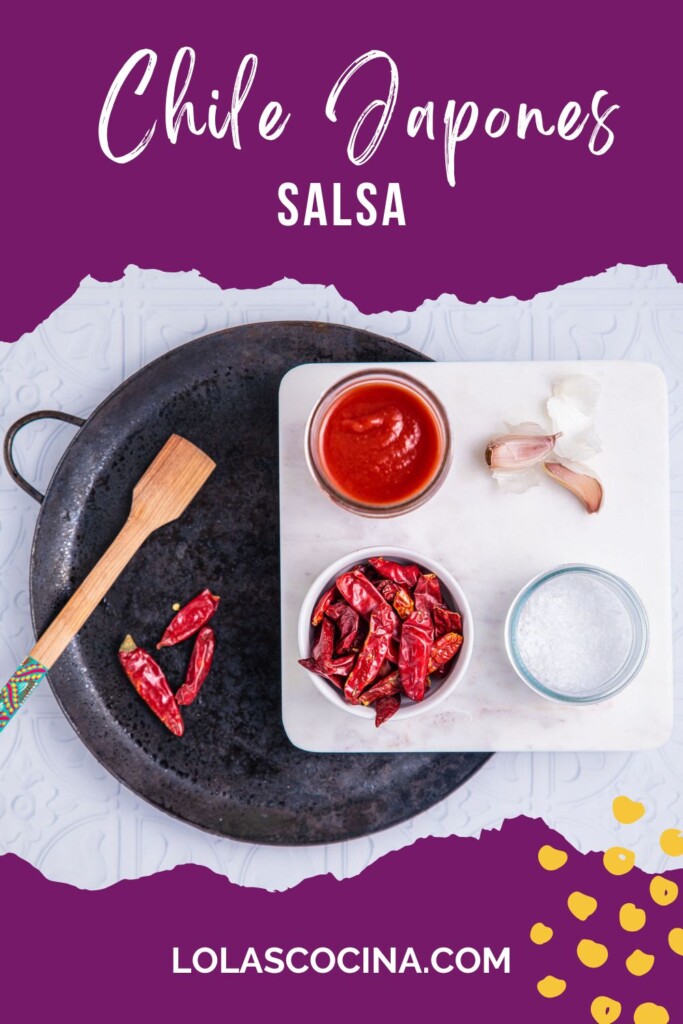
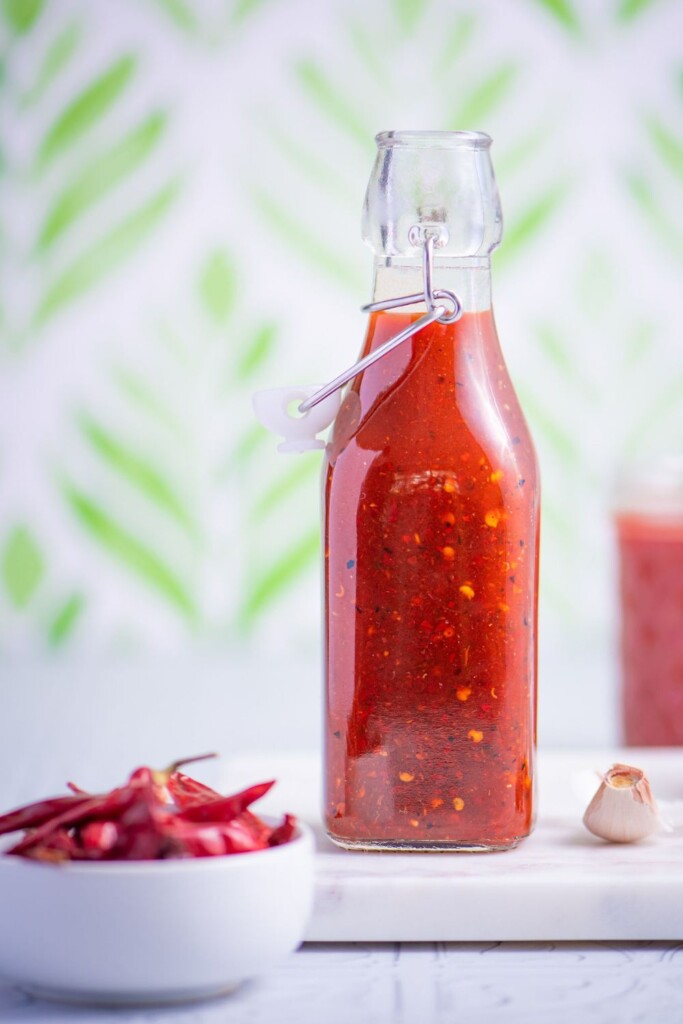

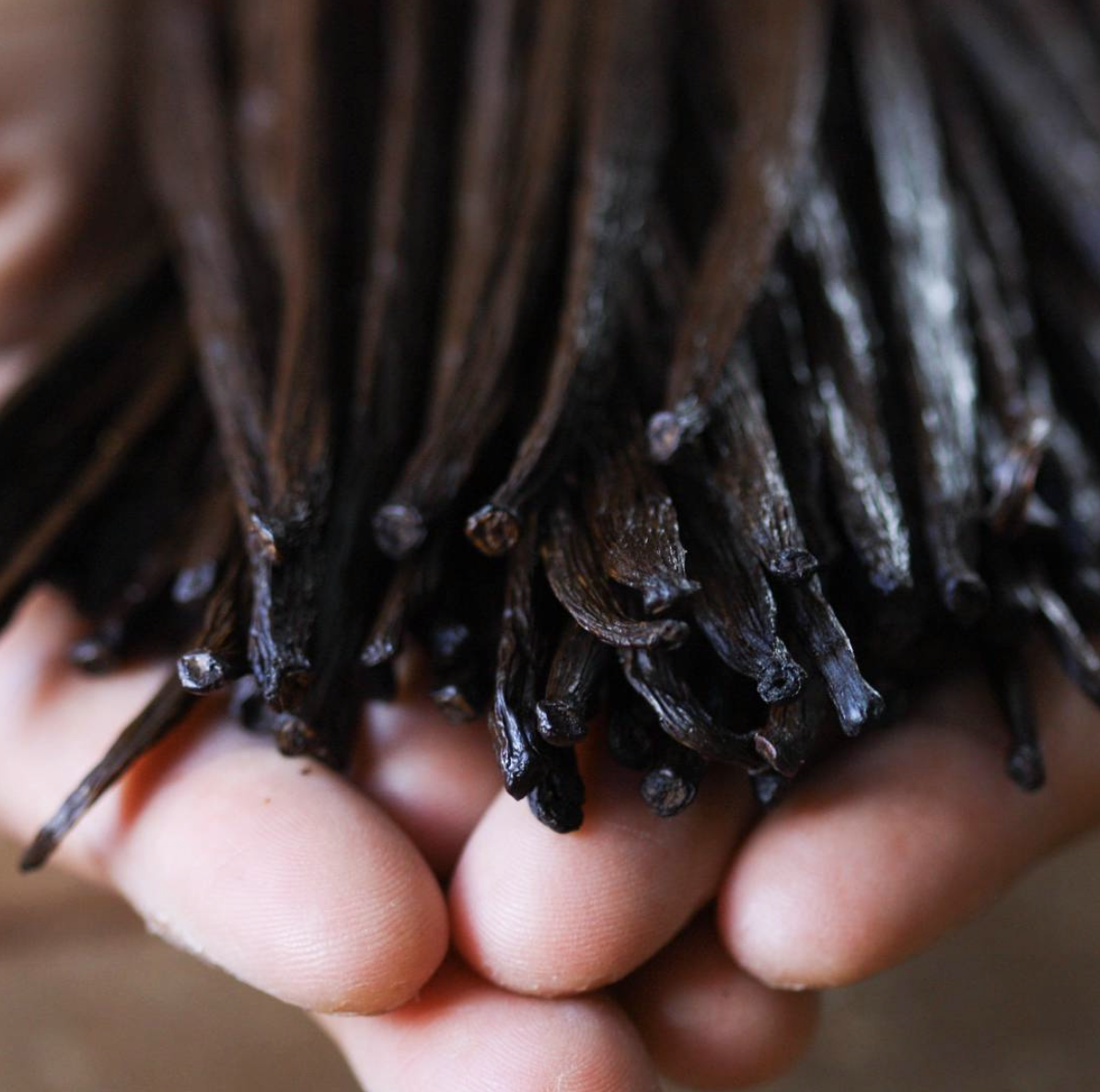
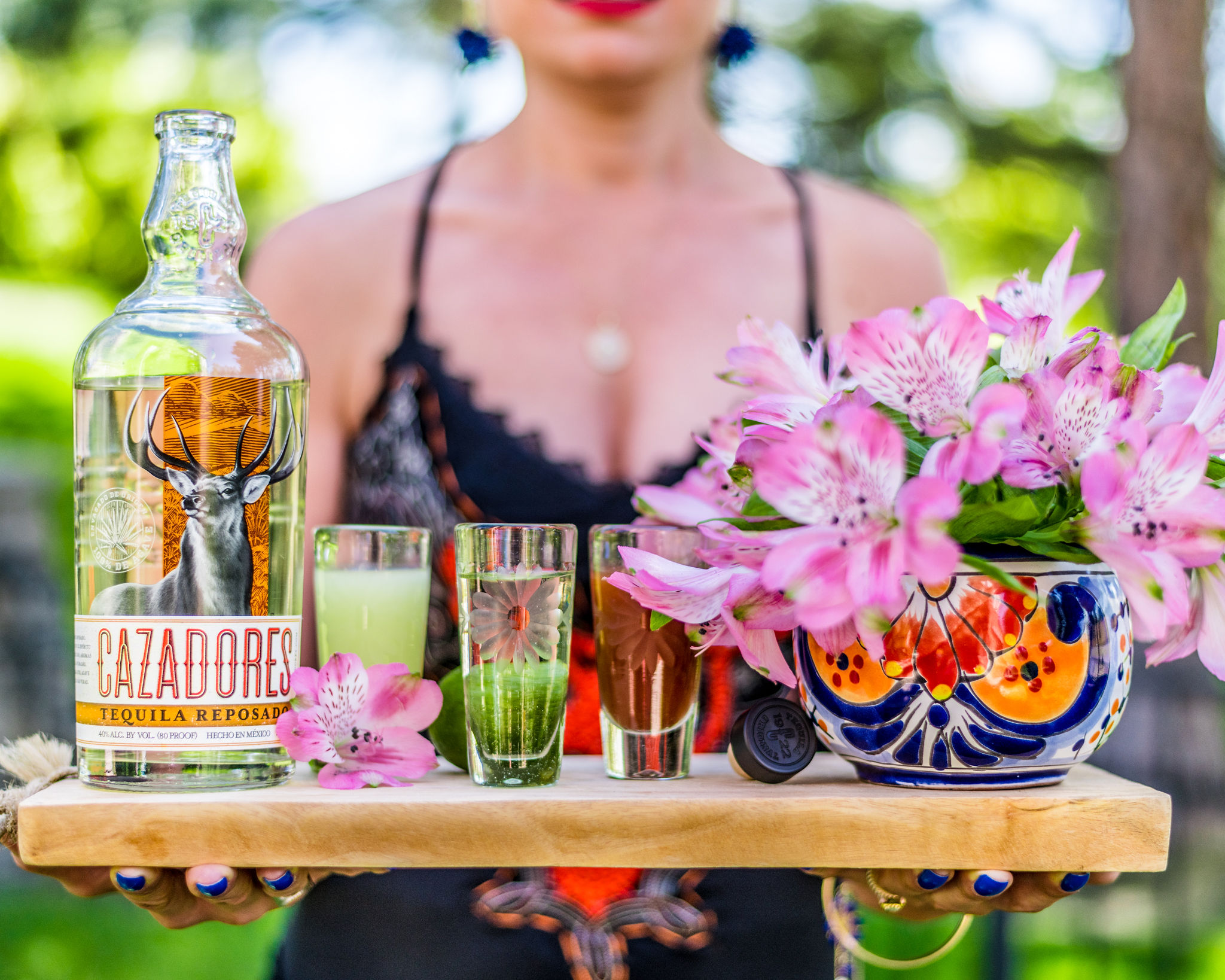

This is amazing! I’ve always been fascinated by the mystery of the “dried chiles” — Thank you for sharing the secrets! You’ve opened up a whole new world for me.
You are very welcome, Susan! There are so many varieties of dried chilies that it can make your head spin.
There was a debate about which chile my grandmother used for this specific salsa. Some argued that it was the chile de árbol and others maintained that it was the chile japonés. Finally, my aunt (my grandmother’s oldest daughter) and older sister, who captured the original recipe before my grandmother passed away, both clarified that it was the chile japonés (“the one without the stem!”).
Yes, Mija, it was chile Japones. :). My mom would be so proud and tickled ‘red’ that you you are making her chile world famous!! As the Acosta’s call it ‘Grandma Lola chile’ or ‘GLC’. What a grand tribute to my Mom. On a side note, another small garlic clove or two enhances the already great flavor, which is what my mother said ‘makes’ the chile. Thank you so much Lola!!
Aunt Teresa: Grandma was so excited the first time she saw Vanessa’s PowerPoint presentation on her salsa. She thought she was on a TV when she saw her face on a computer screen! I’m just glad that through food, we are able able to keep her recipes and memory alive. Thank goodness we have you to learn from as well!
I’m getting closer! I just love Filiberto’s red hot sauce. I’ve been trying to get close to it and this has brought me the closest. The only thing is mine seems a tad too bitter?
Hmmm…bitter? That may have occurred due to roasting the chiles a little too long. I’d recommend adding a teaspoon of sugar to temper the bitterness.
This sauce is so good. Thanks for the recipe Lola. I use it on my eggs in the morning with a corn tortilla.
I just made this and it is FANTASTIC!!! So simple, so spicy and so delicious!! I will be making this as gifts and giving it to people! Thank you for posting it!
So happy to hear this! And yes, it’s definitely spicy. My uncle makes a version of this and gives it to coworkers with a bag of good quality corn tortilla chips (usually the homemade ones from Mexican grocery stores).
Love all the recipes Lola’s posts. Hope to make some soon.
Thank you!